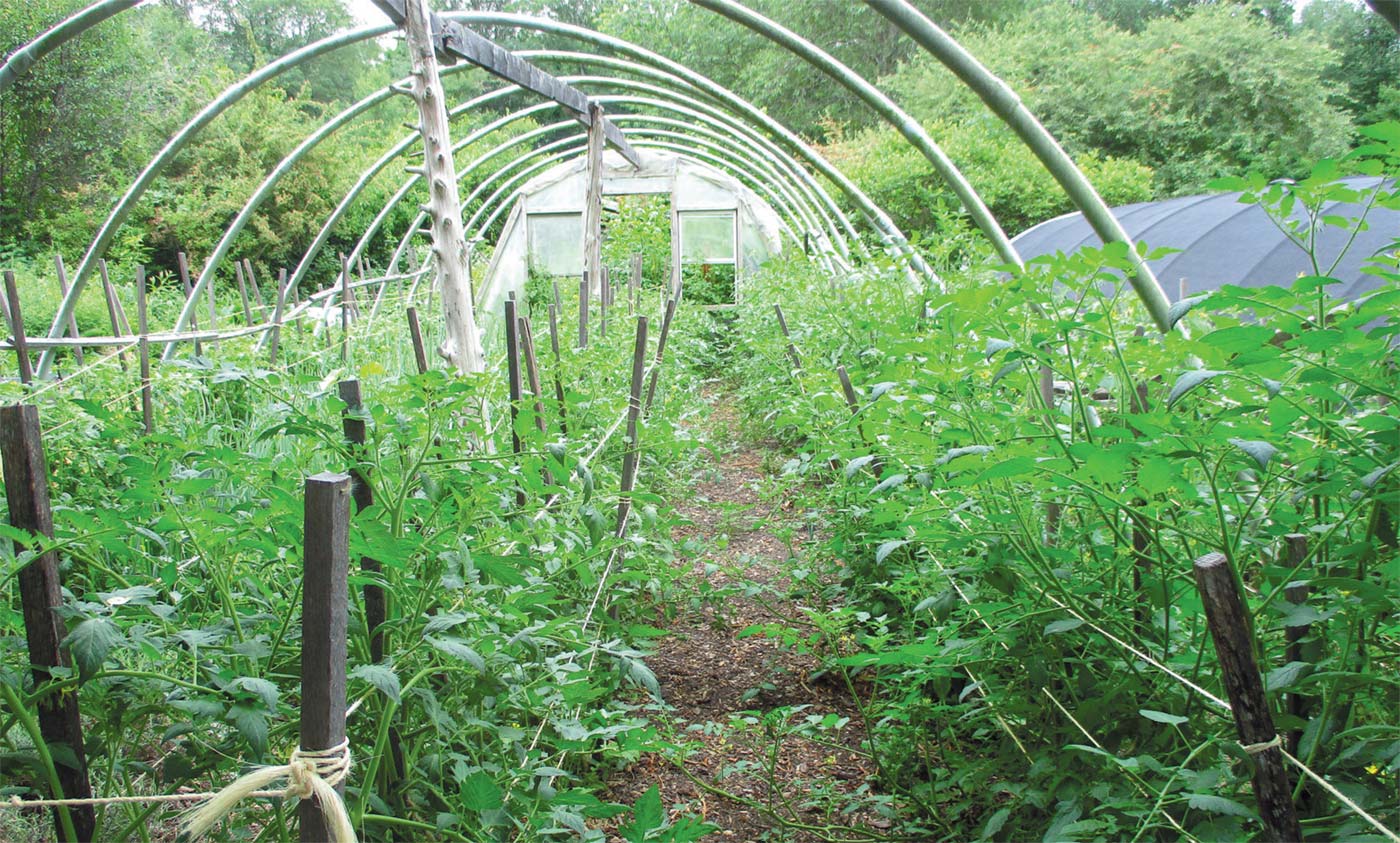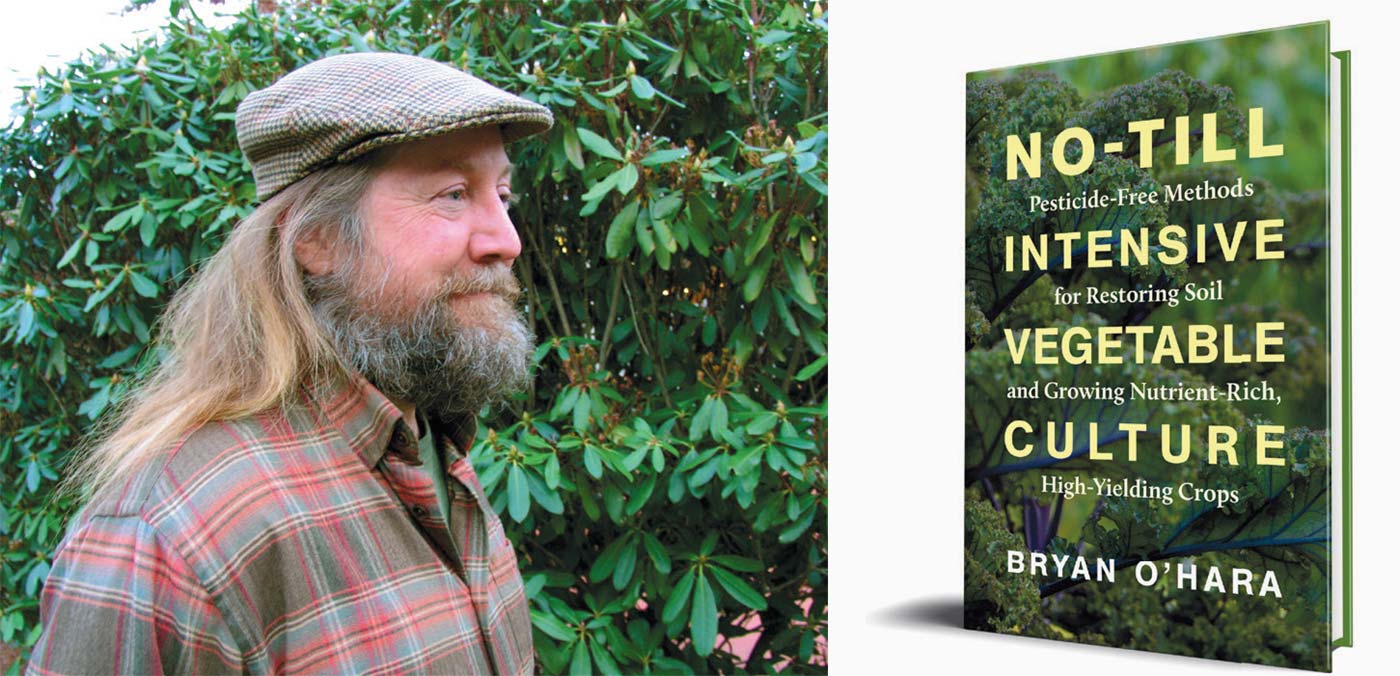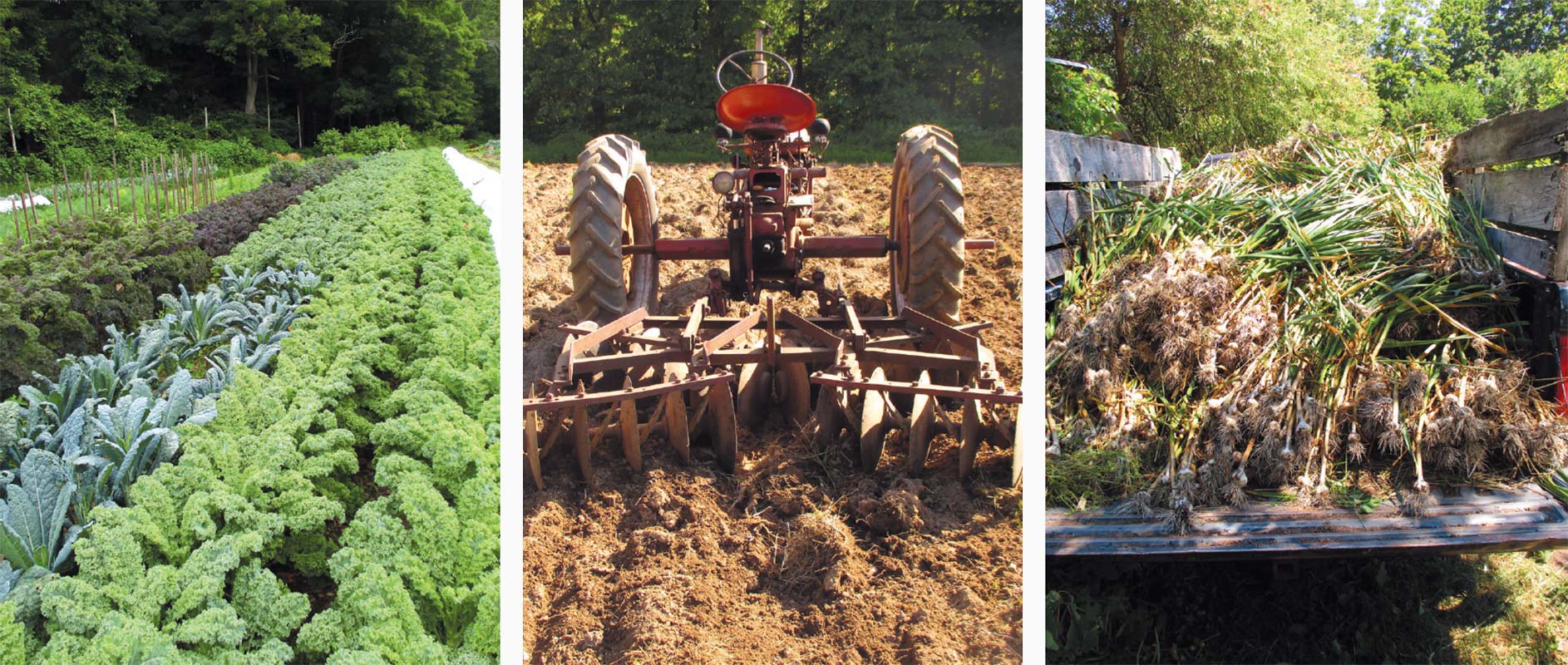No-Till Vegetable Culture Thrives at Tobacco Road Farm
In the rolling hills of Lebanon, Connecticut, the agricultural history is rich. The town is swathed in nearly 10,000 acres of farmland and if you travel down Tobacco Street, you’ll come across a farm that is embracing the spirit of nature. Bryan and Anita O’Hara’s Tobacco Road Farm has become a model for no-till farming and their growing practices have attracted the attention of agricultural experts from around the country. An expert in his own right, Bryan O’Hara is the author of No-Till Intensive Vegetable Culture: Pesticide-Free Methods for Restoring Soil and Growing Nutrient-Rich, High-Yielding Crops. The dedication page of his book thoughtfully states, “To increasing the abundance of life.”
Bryan is a steward of the land in the truest sense. By carefully implementing practices that are restorative rather than exploitative, nature’s processes can be enhanced, and abundance can be attained. The practices are rooted in the teachings of Dr. Rudolf Steiner, the founder of biodynamics, one of the forefathers to the modern-day organic agriculture movement. Reviving our connection with the land and all of nature is something that can be implemented by any grower from the budding gardener to the seasoned farmer. Bryan highlighted a few key themes and growing practices which can be embraced that will lead to higher yields and nutrient-rich food for all to enjoy.
ENHANCING PLANT VITALITY THROUGH HEALTHY SOIL
Growing crops in a way that mimics nature leads to vitality. Building soil health is a fundamental aspect in this equation. Our ancestors attained this by utilizing animal manures and decaying plant matter produced on the farm to yield dark and rich soil. However, industrial agriculture deviated from this approach under the guise of progress and technological advancement. It turned to relying upon synthetic fertilizers concocted using fossil fuels which eventually poison our waterways. It also encouraged heavy mechanization which involves soil disturbance and can lead to soil compaction and erosion.
In nature, a wide variety of plants grow on the surface and soil is minimally disturbed. Farmers can implement no-till practices for nondisturbance. They can also layer decaying plant matter and animal manures along with crushed rock and minerals, and materials from the sea such as seaweed, shells, and marine life. This provides the ingredients for rich and healthy soil. Planting a wide array of crops and rotating them appropriately can ensure the soil does not become depleted of key nutrients. Keeping the soil covered with plant matter prevents erosion and allows water to percolate steadily into the soil. This combination of practices results in healthy, thriving plants which can ward o insects and disease.

WITNESSING PLANT LIFECYCLES FROM SEED TO SEED
Farmers can grow vivacious plants when they allow them to exist from seed to seed. Organic seed companies have honed their ability to provide seeds that will produce robust plants that will yield delicious food. With the ability to easily get access to excellent seeds, many farmers are quick to dispose of plants once they begin to “bolt” and “go to seed.” During this time, the plant begins to devote the majority of its energy to producing flowers which will yield seeds that will eventually allow the plant to reproduce.
Bryan presented an example where he had purchased organic arugula seeds and allowed the arugula to grow through the winter. The arugula grew under a hoop tunnel, but only around five percent of the plants survived. He allowed the plants to go to seed and collected the seeds from the healthiest plants. The following winter, the arugula that grew from those seeds had nearly a one hundred percent survival rate. When farmers witness plant lifecycles from seed to seed, they can select for the most vigorous plants with better taste and more insect and disease resistance.
FOSTERING SYMBIOTIC RELATIONSHIPS
When growing food sustainably, farmers have a responsibility to foster symbiotic relationships. Farming inherently involves disturbing natural systems – fields of crops are grown where grasslands or forests once existed. The food that is grown is bound to attract native and non-native insects and wildlife. To bring about balance, farmers can thoughtfully create conditions that allow plants to thrive.
The following anecdote illustrates how farmers can allow “beneficial” insects to ward off “pests.” The aptly named cabbage caterpillar feeds upon cabbage plants. is non-native species happens to be the target of a small wasp known as Cotesia glomerata. The very small wasp stings the caterpillar and lays its eggs inside of it. As the wasp larva grow, they begin to consume the caterpillar. They soon emerge from the caterpillar and spin a cocoon on the cabbage plant. When the wasp is ready to leave its cocoon, it feeds on the blossoms of the cabbage plant. The cycle begins again: the wasp protects the cabbage plant from being over-consumed by the cabbage caterpillar, and the wasp is able to thrive on the blossoms of the cabbage plant later in its life cycle.
“Guidance is there for you if you simply ask for it,” Bryan asserts. By observing nature and witnessing how interconnected everything is, farmers can discover and engage in practices that will not only produce nutrient-rich food but also allow life on the farm to thrive. Let us all strive to be the best stewards of the land we can be.

Bryan has been farming for over 30 years and was named the 2016 Northeast Organic Farming Association's Farmer of the Year.
To find out more about Bryan’s inspired approach and mission read his recently released book – No-Till Intensive Vegetable Culture. Those who should know are praising it!
“This humble soil genius understands the true art and science of vegetable farming.” —Ray Archuleta, farmer; founder, Soil Health Academy
“O’Hara takes us on a journey to create a vibrant ecosystem that generates health through the production of nutrient-dense food while also helping to build community. I highly recommend this book to all those who seek a better future for humanity.” —Gabe Brown, rancher; author, Dirt to Soil




